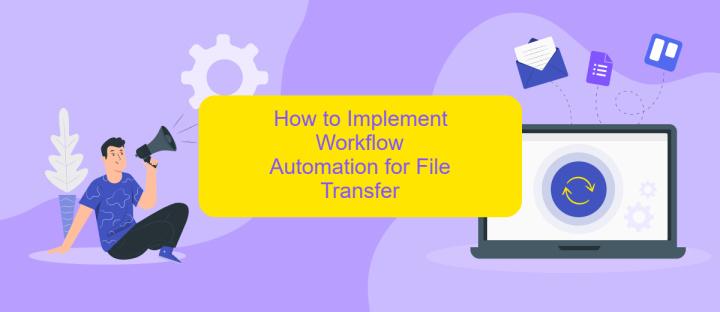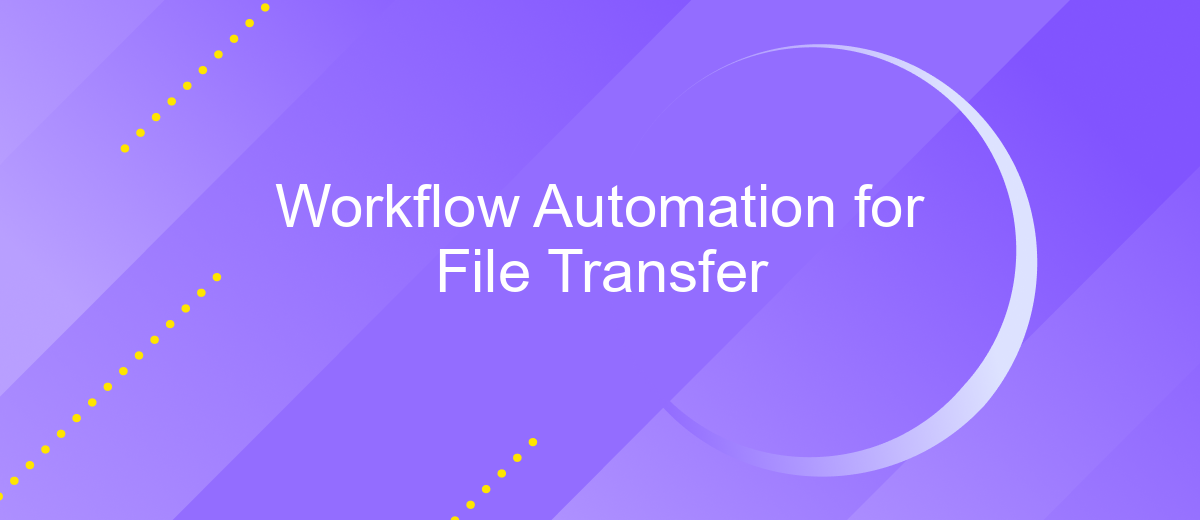Workflow Automation for File Transfer
In today's fast-paced digital landscape, manual file transfers can be time-consuming and prone to errors. Workflow automation for file transfer streamlines these processes, ensuring accuracy and efficiency. By automating repetitive tasks, organizations can save valuable time, reduce operational costs, and enhance data security. This article explores the benefits and implementation strategies of workflow automation for seamless file transfer operations.
Introduction
In today's fast-paced digital world, efficient file transfer is crucial for businesses of all sizes. Workflow automation for file transfer not only saves time but also minimizes errors, enhances security, and ensures seamless operations. By automating routine tasks, companies can focus on more strategic initiatives and improve overall productivity.
- Reduces manual intervention and human error
- Enhances data security and compliance
- Improves operational efficiency and reliability
- Facilitates seamless integration with other systems
One of the key tools for achieving effective workflow automation in file transfer is ApiX-Drive. This service allows businesses to easily integrate various applications and automate data exchange processes without the need for extensive coding knowledge. By leveraging such platforms, organizations can streamline their file transfer workflows, ensuring that data moves efficiently and securely across their digital ecosystems.
Exploring the Benefits of Automated File Transfer

Automated file transfer offers numerous advantages that significantly enhance business operations. By eliminating the need for manual intervention, it reduces the risk of human error, ensuring that files are transferred accurately and on time. This reliability is crucial for maintaining data integrity and meeting compliance requirements. Furthermore, automation speeds up the transfer process, allowing companies to respond more quickly to market demands and customer needs. This increased efficiency can lead to cost savings and improved productivity across various departments.
Another key benefit of automated file transfer is the ability to seamlessly integrate with other business systems and applications. Services like ApiX-Drive facilitate these integrations, allowing for smooth data flow between different platforms. This interconnectedness enables businesses to automate complex workflows, reducing the need for manual data entry and minimizing the chances of data silos. Additionally, automated systems can be easily scaled to handle growing volumes of data, ensuring that the file transfer process remains efficient as the business expands. Overall, the automation of file transfers is a strategic move that supports operational excellence and scalability.
How to Implement Workflow Automation for File Transfer

Implementing workflow automation for file transfer can significantly streamline your processes and reduce the risk of human error. To get started, follow these steps:
- Identify Requirements: Determine the specific needs of your file transfer processes, including file types, sizes, and frequency.
- Choose Automation Tools: Select tools that support your requirements. ApiX-Drive is a great option for integrating various services and automating workflows without coding.
- Set Up Integrations: Configure the chosen tools to connect with your existing systems. ApiX-Drive simplifies this by providing a user-friendly interface and pre-built connectors.
- Create Workflow Rules: Define rules for file transfer, such as triggers and conditions. This ensures files are transferred automatically based on your criteria.
- Test and Monitor: Conduct thorough testing to ensure the workflow operates as expected. Monitor the process regularly to identify and resolve any issues promptly.
By following these steps, you can effectively implement workflow automation for file transfer, enhancing efficiency and reliability in your operations. Utilizing tools like ApiX-Drive can further simplify the integration and automation process, making it accessible even for non-technical users.
Best Practices for Efficient File Transfer Automation

Efficient file transfer automation is crucial for maintaining seamless workflows and ensuring data integrity. To achieve this, it's essential to follow best practices that optimize the process and minimize potential disruptions.
Firstly, ensure that your automation tools are reliable and compatible with your existing systems. Regularly update your software to benefit from the latest features and security patches. Additionally, consider using cloud-based solutions for greater flexibility and scalability.
- Implement robust security measures, including encryption and secure authentication protocols, to protect sensitive data during transfer.
- Utilize error-handling mechanisms to detect and resolve issues promptly, minimizing downtime and data loss.
- Schedule transfers during off-peak hours to reduce the impact on network performance and avoid congestion.
- Integrate with services like ApiX-Drive to streamline and automate data flow between different applications and platforms.
By adhering to these best practices, organizations can enhance their file transfer processes, ensuring efficiency, security, and reliability. Leveraging integration services like ApiX-Drive further simplifies the automation of workflows, enabling seamless data exchange and improved operational efficiency.
Conclusion
In conclusion, workflow automation for file transfer significantly enhances operational efficiency by minimizing manual intervention and reducing the risk of human error. By leveraging advanced tools and services, organizations can streamline their processes, ensuring that files are transferred securely and promptly. This automation not only saves time but also allows employees to focus on more strategic tasks, ultimately driving productivity and growth.
Moreover, integrating services like ApiX-Drive can further optimize file transfer workflows. ApiX-Drive enables seamless integration between various applications, ensuring that data flows smoothly across different platforms. This integration capability is crucial for maintaining consistency and accuracy in data management. By adopting such automated solutions, businesses can stay competitive in an increasingly digital landscape, ensuring that their file transfer processes are both reliable and efficient.
FAQ
What is workflow automation for file transfer?
How can I set up automated file transfers between different systems?
What are the benefits of automating file transfers?
Can I automate file transfers between cloud storage services?
Is it difficult to set up workflow automation for file transfers?
Strive to take your business to the next level, achieve your goals faster and more efficiently? Apix-Drive is your reliable assistant for these tasks. An online service and application connector will help you automate key business processes and get rid of the routine. You and your employees will free up time for important core tasks. Try Apix-Drive features for free to see the effectiveness of the online connector for yourself.

